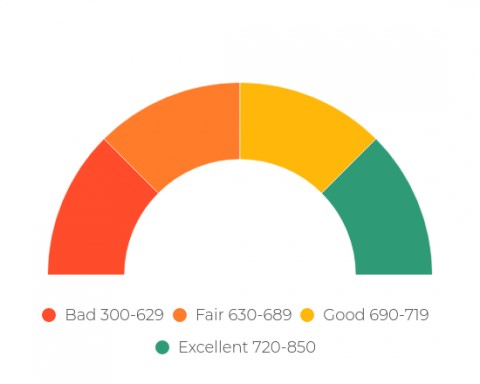5 Steps to Buying Your Dream First Home

Have you ever spent hours watching a marathon of shows like Fixer Upper or Property Brothers? If yes, then you’ve probably also daydreamed about the “must haves” and “nice-to-haves” for your very first home. From open floor plans to a home office, one of the best parts of looking to buy your first home is watching HGTV shows and scrolling through Pinterest boards for inspiration.
To make these dreams a reality and bring your vision to life, it’s important to plan. That’s why we’ve compiled the list of our top five steps for first-time home buyers, to help as you look to purchase a new home:
1.) Start Saving Now
Buying your first home may seem like a daunting goal, but it’s achievable if you ask yourself the right questions and plan. For example, do you know how much money you would need for a down payment on a house that costs $250,000? If you’re like most first-time home buyers, you may have no idea.
The correct response: Well, it depends. The tradition is to put 20% down, but many lenders now permit much smaller down payments, and first-time home buyer programs allow as little as 3% down. Keep in mind that putting down less than 20% may mean higher costs and paying for private mortgage insurance.
After considering the recommended percentages for a down payment, it’s time to put the pencil on the paper and work your numbers. For example, if you want to buy a house that’s $250,000, can you afford to put down $50,000? Most likely, you won’t have this money just sitting in your bank account, but if you start saving now, explore your options (like a 401K withdrawal, although make sure you understand potential penalties before going this route), and use tools like a mortgage loan calculator—then you’ll be one step closer to becoming a first time home buyer.
2.) Get Organized
Once you have your eye on a house, and depending on how competitive the housing market is, the process may move very quickly—and preparing to make your offer can take time and organization. To make sure that you don’t miss out on your dream first home, here are a couple of steps you can take now:
- Gather Important Documents: Homebuyers must document income and taxes, so you will need to share W-2s, tax returns, and other similar information. In addition, mortgage lenders will typically request two recent pay stubs, the last two years’ W-2s, tax returns, and the past two months of bank statements.
- Get Pre-Approved for Mortgage: It’s advised that you get pre-approved before you start looking at homes, so you know exactly what you can afford and sellers are more likely to accept your offer if you have already been pre-approved. The good news? American Heritage Credit Union offers members free pre-approval for mortgages, so you’ll know how much you can afford and you’ll have the competitive edge over other potential buyers.
3.) Check Your Credit
Now that you’re ready to apply for a loan for your first home, one of the most important factors that a lender is going to consider is your credit score. If you are unsure of what your credit score is, or how it can impact your home-buying process, consider the following:
- Check Your Score in MyFICO.com: While your bank or another website may provide you with a free credit score, that number may not be the same number the mortgage lenders use. Why? Because “mortgage lenders use a unique scoring model that’s even different from the free FICO score” and it’s recommended that you go to “MyFICO.com and pay for your score…if you want to see what the lender is seeing” (NBC News).
- Understand What a Good Score Looks Like: Nerdwallet published the chart below that shows the credit score ranges. When it comes to first-time home buying, the higher the credit score, the better the interest rate, so it’s in your best interest to keep your score as high as possible. If you’re concerned that your score is subprime, begin the repair process at least six months before shopping for a home, because repairing damaged credit takes time and sometimes money, if you need to pay down debt to improve your utilization.

Source: Nerdwallet
4.) Get to Know the Neighborhood
After you find the perfect house on your Zillow app (hello, curbside appeal!), your next step is to get to know the neighborhood. Finding the right neighborhood for you is just as important as finding the right house and can impact things like your resale value potential. Below are a few questions and recommendations to follow when researching your potential new neighborhood:
- How are the schools in the neighborhood? Make sure you ask this question, even if you don’t have kids, since the answer to this question may impact the home’s value.
- What is the crime like? Oftentimes, first-time home buyers purchase homes in “up-and-coming neighborhoods” that may be in transition. Given that, it’s important to make sure that you feel safe and secure. To test the waters, drive through the neighborhood multiple days and at different times to check out traffic, noise, and activity levels.
- Am I close to important amenities? This means considering how close your potential first home is to various destinations—from your work location to other amenities, including a grocery, pharmacy, hospital, and restaurants.
5.) Know Your Limits
While we’ve covered a lot in this post, one of the most valuable takeaways is to make sure that you purchase your first home when you’re ready, and on your terms. The last thing you want to do is rush into buying a home, which will most be likely your largest purchase to date, at a time that isn’t right for you. Once you are ready to make the move, complete the steps listed above, and you’ll be that much closer to securing the keys to your very first home.
